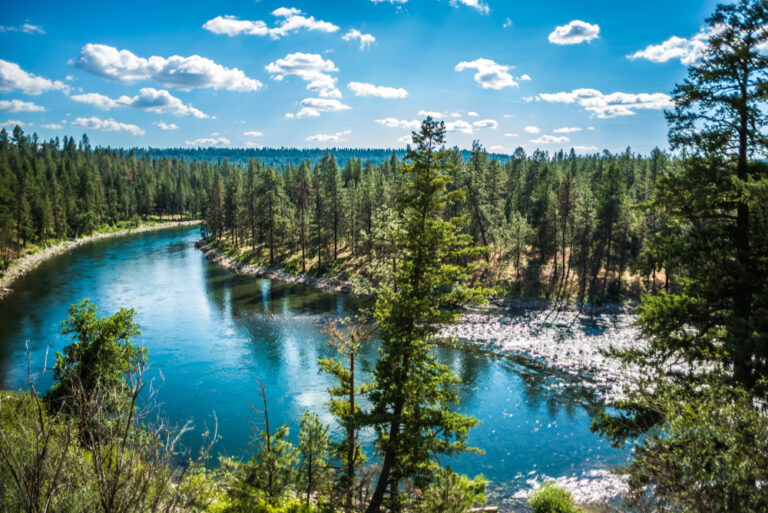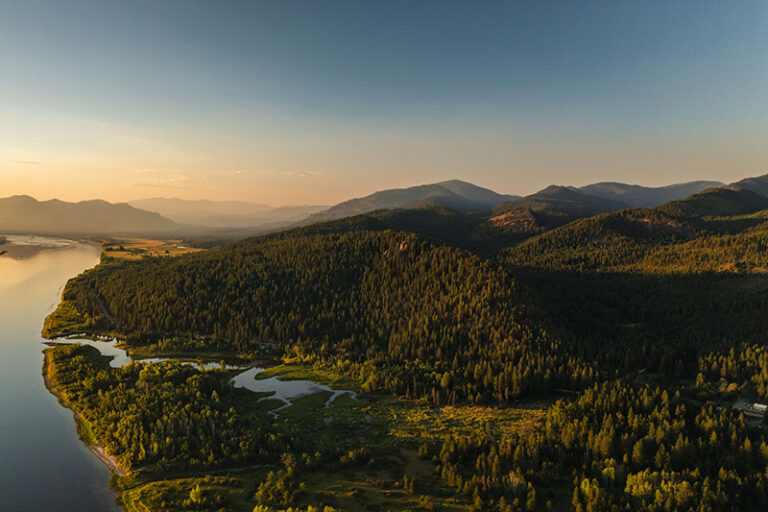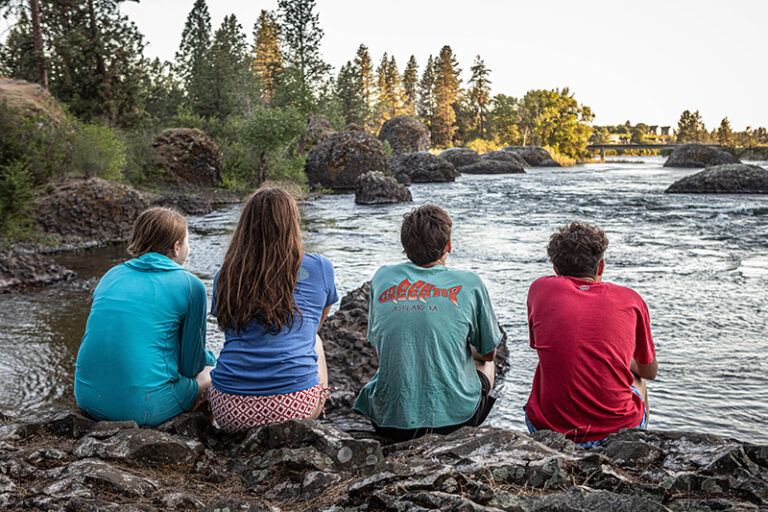WHILE SOME PEOPLE in the Northwest worry about excess spring runoff as the mountain snow melts, flooding local rivers and streams with whitewater, Mike Hamm of Hydrology Kayak Instruction gets excited.
Hamm was introduced to kayaking six years ago, when a friend who was taking a class for the outdoor recreation degree at EWU took him out to the river. A professional snowboard instructor, Hamm found a surprising amount of similarities between snowboarding and kayaking, and took to it quickly. “There’s a lot of edging and carving, just like in snowboarding, and you have to control the pressure that the river’s giving you. It’s a full body workout, just like snowboarding—you’re using your feet, ankles, hips, and upper body to make your moves.”
“I love the variety,” Hamm says, “and it’s something to keep me busy during the summer. It’s really exciting—there’s no pause button once you get started.” Hamm was teaching for another organization, but when he realized they were spending more time repairing the boats than in them teaching, he decided to strike out on his own to start a kayak instruction company with some friends. “It’s our specialty,” he says: since the company doesn’t have to disperse resources over several types of watercraft, they can provide reliable, high quality equipment and specialized instruction.
Since they cater to all sizes, ages, and abilities of kayak students, there’s an emphasis at Hydrology on quality, customizable gear. Here’s what they use:
KAYAK: The Jackson Fun series kayaks, all 2008 models, including the 2Fun, 4Fun, and SuperFun. Hamm personally uses the Jackson Superstar, which has become the “superstar” of his kayak gear. “It’s a little shorter, a little wider, and a little less forgiving” than the Fun series, he says, which are well suited to students of all shapes, sizes and abilities. The kayaks are easily adjusted with Jackson’s Happy Feet and Happy Seat outfitting. “Each boat is individually customizable, and allow for a personal fit very quickly.”
SKIRT: Snapdragon River Trek. Made by a Bellevue company, these are easy for beginners to stretch, Hamm says. “They’re easier to mount on the boat,” Hamm says, “which makes participants feel a lot more comfortable if they can do it on their own, rather than having two or three guys stretching the skirt on to the boat.”
PADDLE: AT4 Play model bent shaft paddle by Adventure Technology Inc, another Pacific Northwest company. The paddles are “ergonomically correct to keep your wrists from getting fatigued, and puts you in a better position for success,” he says. Hamm uses the AT2 for his own paddle—it’s made of carbon fiber to be lighter, and it has foam in the blades to add dexterity in the water.
HELMET: Hamm’s team chose Bern’s Baker model for the participants, due to its easy fit and durability. “We have bills on all the helmets to provide some sun protection,” he says, “so usually I don’t wear sunglasses because the water just beads up on them.” Hamm uses the Sweet Strutter, made of Kevlar.
DRY TOP: NRS Revolution. Hamm also wears the NRS Desperado Socks similar to a neoprene booty but with a sole, and NRS splash pants. “NRS is local out of Moscow,” Hamm says, “and their gear is very durable, but they’re also very easy to work with in terms of warranties if something goes wrong, and I know we can get it fixed in just a few days, rather than a few weeks.”
“We always encourage the participants to wear polypro or synthetic materials under any dry top, because cotton gets wet and cold and stays that way.”
LIFE JACKET: The Wedge, by Stohlquist, for participants, and the Lotus Design Rescue Vest for Hamm. “The Wedge meets Coast Guard standards for flotation, but it’s small enough in the front and back to allow a full range of motion for paddling and swimming,” he says. The Rescue Vest has more flotation and it has a quick release leash so he can hook up to a loose boat, and still get away if something goes wrong during the tow.
THROWBAG: Salamander.
NOSEPLUGS: Smiley.
Corrections: the April WYG featuring Lindell Haggin: Her binoculars are by Zeiss rather than Weiss. The Bureau of Land Management provides additional funding and support for the Audubon Society surveys.













